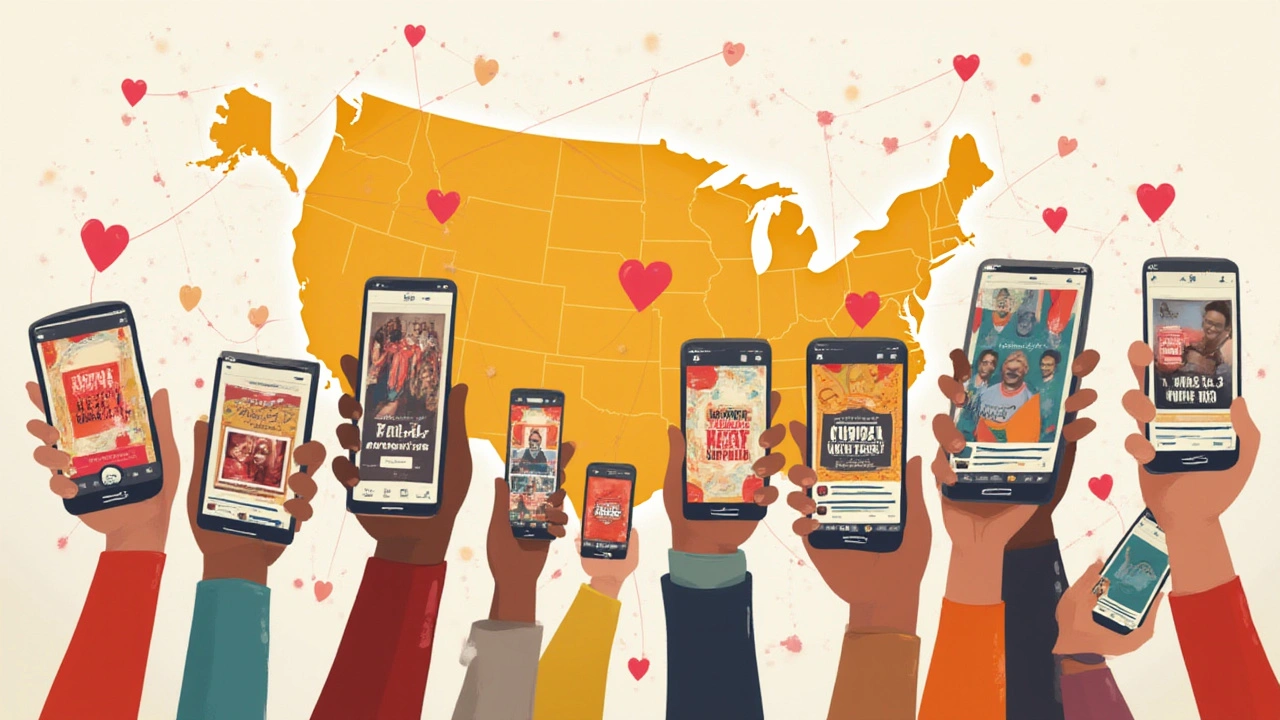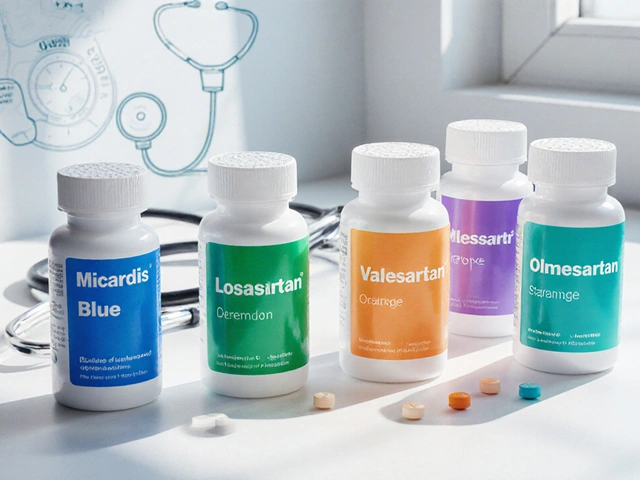
You’d be surprised how many life-changing stories never get heard. Duchenne Muscular Dystrophy (DMD) affects about 1 in every 3,500 boys worldwide, but mention it in casual conversation and you’ll likely get a blank stare. In a world that runs on scrolls, likes, and shares, no rare condition should stay invisible. Social media offers insanely powerful tools for change—if you know how to use them.
Why Digital Advocacy Matters for DMD
Every Instagram story or X (formerly Twitter) thread about DMD isn’t just content; it’s a potential connection to a family desperate for answers. More than 250,000 children are living with Duchenne globally, and the truth is: awareness leads to understanding, which often snowballs into funding, research, and possibly, life-saving breakthroughs. A single viral post can do what years of isolated campaigns couldn’t pull off. Plus, young people, especially those affected, live their lives online—so that’s exactly where conversations need to happen.
Here’s a real-world point: when Parent Project Muscular Dystrophy started ramping up their social game, their donation rate increased by over 30% during September, DMD Awareness Month. People act when they feel connected. And it starts by giving them a story, a face, and a way to share hope. The best digital advocacy moves beyond just posting—it builds a movement that can even nudge lawmakers and corporate giants. That’s why nailing your strategy and tools is essential.
Toolkit Essentials: Graphics, Captions, and Hashtags
You don’t need a big design budget or paid software. Let’s talk practical tools you can use right now. Canva is the MVP here—free, simple, and packed with templates perfect for DMD campaigns. Square graphics work best for Instagram, while wider images pop on Facebook and X. Always use high-contrast text (think white on red) for easy reading, and feature real people whenever possible—stock photos never grab hearts like true stories do.
- Infographic - "DMD Fast Facts": craft slides with powerful numbers. For example: “1 in 3,500 boys. 250,000+ lives worldwide.”
- Awareness Ribbon Graphics: Classic red and yellow ribbons instantly signal cause-related content.
- Meme-Style Posts: Humor or relatable quotes often get more shares than statistics.
- Faces of DMD: Feature short bios, real names (with permission), and compress their journey into 2-3 sentences.
Captions make a huge difference. People scroll quickly, so keep it under 200 characters, and hook them with a question or an urgent fact:
- “Did you know DMD is the most common fatal genetic disorder diagnosed in childhood?”
- “Every share brings us closer to a cure. Meet Ethan—he’s 9 and racing against time.”
Hashtags bring your post into trending circles. Use disease-specific ones like #DuchenneAwareness, #EndDuchenne, and #DMDStrong, but blend them with broader hashtags like #RareDisease and #HealthAdvocacy to reach a larger crowd. Most platforms favor 2-3 focused hashtags over hashtag clutter.

Scheduling and Posting Tips for Maximum Impact
Timing isn’t everything, but it helps a lot. According to Sprout Social’s 2024 trends, posts on health topics hit best between 11 am - 1 pm local time, and again after dinner between 7 - 9 pm. Batch your content: set aside two hours at the start of each month to schedule posts using tools like Buffer or Hootsuite. You’re much less likely to miss key dates that way—especially the entire September (DMD Awareness Month).
Consistency builds trust. So, aim for three posts per week—one informative graphic, one personal story, and one simple call-to-action like "Share if you care.” Short videos (under 60 seconds) showing a daily challenge or a family moment get more comments and shares than static images, especially on TikTok and Instagram Reels. Schedule a weekly “DMD Fact Friday”—followers will start to expect it and check in, building recognition and anticipation.
Don’t forget real-time engagement. If someone shares their own experience in the comments, reply within 24 hours. Prompt conversation: “What’s one thing you wish more people knew about DMD?” This doesn’t just bump your post up in algorithms—it builds real community, which is gold for advocacy. And if your post gains traction, pin it to the top of your page for extra visibility during key awareness weeks.
Ready-to-Use DMD Awareness Content Library
To make things easy, here’s a batch of plug-and-play resources you can use now. Everything below is designed for the biggest no-brainer impact:
- DMD awareness: Check out this library of graphics and facts you can repost instantly.
- Awareness Quotes Folder: Pair short, bold statements like “Muscles Matter” or “Every Breath Counts” with a simple red or yellow background. Link back to local support networks or donation pages in your bio.
- Personal Story Templates: Plug in a photo, age, and a 2-sentence journey summary. Make sure to include a call to action (“Donate,” “Share this story,” “Ask me about DMD!”).
- Swipe File: Keep 10-15 “Did you know?” facts about DMD handy for quick social snippets—update these as new data comes out.
If you like numbers, here’s a snapshot so you can compare at a glance. 2024’s best-performing DMD posts shared these characteristics—use them for inspiration:
| Type of Post | Average Shares | Engagement Rate | Time Spent Viewing |
|---|---|---|---|
| Personal Story Video | 250 | 6.5% | 55 seconds |
| Graphic Infographics | 180 | 4.7% | 34 seconds |
| Awareness Quotes | 90 | 3.2% | 22 seconds |
| Event Announcements | 60 | 2.1% | 18 seconds |
Lesson learned: videos and personal stories tend to grab—and hold—attention. Try pairing statistics with a face or a testimonial for best results.

Measuring Success and Adjusting Your Advocacy Strategy
Posting is only half the battle; knowing what lands and what doesn’t is where the magic happens. Use your platform’s analytics to keep track of which posts get the most shares, saves, and comments. Watch for spikes around DMD Awareness Month, but don’t ignore year-round opportunities; the fight doesn’t stop after September.
If you see a type of content flopping (like long text posts), pivot. Maybe a short video or an emoji-powered infographic speaks louder. A quick feedback poll in stories—"What do you want to see more of?"—can expose gaps you never noticed. Crowdsource content ideas from your own followers. Once someone shared their back-to-school DMD experience, and the comments section exploded with both tips and support for other families. That’s the kind of ripple effect you want. It turns passive followers into passionate advocates.
Set one or two clear goals per month: “Grow our hashtag to 500 uses,” “Get 20 new shares on a personal story,” or “Land in the DM’s of a local legislator.” Chunky goals work better than vague “raise awareness” ambitions.
Celebrate wins—both big and tiny. Even one new follower or a single viral comment can mean a wider impact than you’d expect. Remember, there’s no one-size-fits-all formula and no post is wasted as long as someone learns something.




19 Comments
If you're not using Canva, you're doing it wrong. Stop wasting time on fancy software. This isn't a design contest-it's a survival campaign. Just post the damn red ribbon with the stats. Done.
I'm from India and I never knew how many boys are affected. This post made me cry. I shared it with my cousin who works in a pediatric clinic. We're making posters tomorrow. Thank you for showing us how to help.
There's something sacred about turning data into dignity. When you pair a child's face with a statistic, you're not just informing-you're humanizing. That's the quiet magic of advocacy. Don't just post. Presence matters more than virality. Let your content breathe. Let their stories linger.
I'm not saying this isn't noble... but let's be real. Most of these posts get buried under cat videos and influencer selfies. You think a red ribbon changes policy? LOL. #DMDStrong is just performative virtue signaling with better contrast ratios. 😒
Canva? Really? Anyone with a basic understanding of design knows that template-based graphics are visually lazy. And you're recommending memes? That's not advocacy-that's aesthetic nihilism. If you want real impact, you need peer-reviewed visual communication frameworks, not Instagram filters.
I appreciate the effort here. I'm from a rural town in the Midwest and I've never seen a DMD campaign that didn't feel like it was made for urban elites. This feels… accessible. Especially the part about real faces. That’s the key. Not hashtags. Not infographics. Just people.
I love this but i think you shoudl also add something about how families can ask for captions in spanish or other langauges. so many kids are bilingual and their parents need to feel seen too. just a thought :)
Use the 11am-1pm window. Always. I posted a video at 8pm once. Got 12 views. Posted the same one at noon? 2k. Timing isn't magic-it's math.
Interesting. I'm from India and we don't have much awareness here. But I noticed something-people respond better when the content doesn't sound like a nonprofit brochure. Less 'fighting for a cure,' more 'this is what Tuesday looks like.' Less heroism. More humanity.
This whole thing is a feel-good trap. You're giving people a checklist to feel like they're helping without actually changing anything. No one's going to fund research because of a meme. The system doesn't care about your red ribbon. It cares about lobbyists. And you're not even talking about that.
Your engagement metrics are statistically invalid. You're conflating shares with impact. A 6.5% engagement rate on a video with 250 shares means nothing if the audience is 90% bots or relatives. You need cohort analysis, retention curves, and attribution modeling. Otherwise you're just optimizing for vanity metrics.
I mean... I get it. But why are we still using red and yellow? 🤔 That's 2015 aesthetics. Why not try gradient blues and purples? Or even neon? Also, why are all the photos of boys? What about girls with Becker's? They're often left out. 🙃
The statistical framework presented is commendable, yet insufficiently granular. The sample size of 250 shares for personal story videos lacks context regarding platform algorithmic bias, geographic distribution, and temporal decay. A rigorous analysis would require multivariate regression against baseline engagement norms for health-related content in 2024.
Just post something every Friday. Doesn't have to be perfect. Just show up. That's how movements start. Not with fancy tools. With consistency.
The assertion that 'a single viral post can do what years of isolated campaigns couldn't' is empirically unsupported. No peer-reviewed study demonstrates causality between social media virality and clinical funding increases. Correlation ≠ causation. Please cite your sources.
I've been doing this for 12 years. I've seen it all. The memes, the ribbons, the fundraisers that disappear after September. I remember when my son was diagnosed and I spent 18 months crying in the bathroom while scrolling through posts like this, thinking someone, anyone, would finally understand. But they never did. And now I'm just tired. Not angry. Just... tired. And I don't know if this changes anything anymore.
One thing I didn't see mentioned: translate your captions into ASL or use captioned videos. A lot of families with DMD also have hearing issues. Accessibility isn't an add-on-it's part of the message.
Let’s turn this into a movement that smells like hope and sounds like laughter. Not pity. Not guilt. Not statistics. Real joy. Real struggle. Real life. Let’s make people feel the heartbeat behind the diagnosis.
The recommendation to use Canva is problematic. The platform's default templates exhibit a homogenized visual language that undermines the uniqueness of individual narratives. Furthermore, the emphasis on 'high contrast' text may violate WCAG 2.1 guidelines for users with photophobia, which is common in neuromuscular conditions. A more nuanced approach is required.